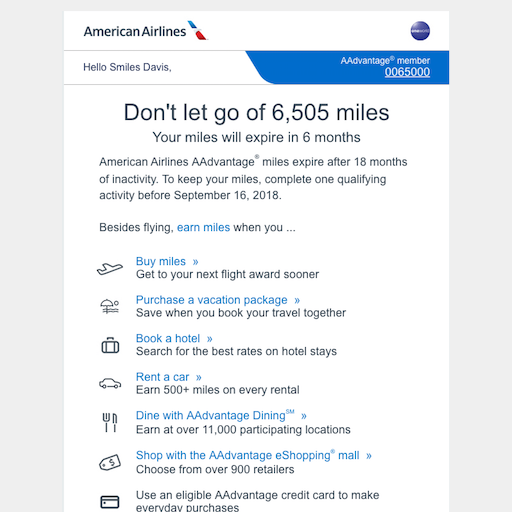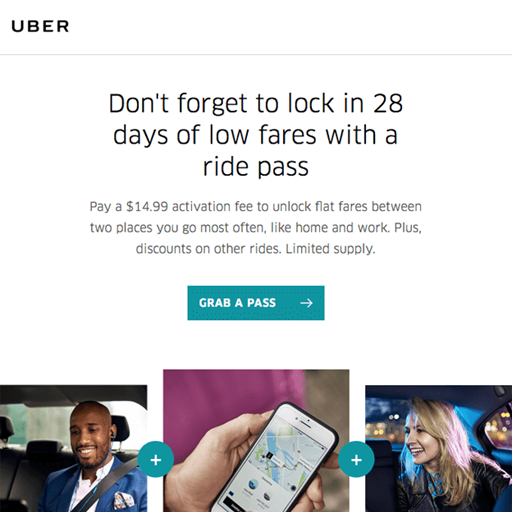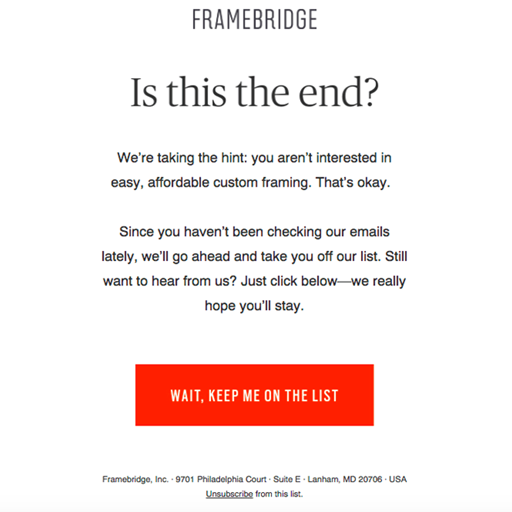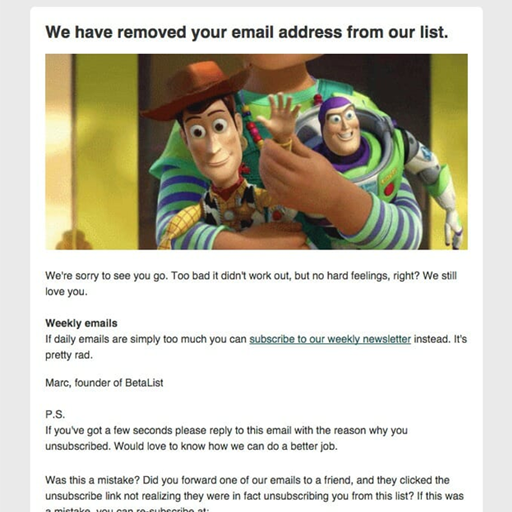Strengthen Your Email List: Here's How to Write the Perfect Re-Engagement Email
Do you have any inactive subscribers? If you’re in the business of forging a massive email list to market your services or products, chances are that you have. In fact, according to MarketingSherpa, marketers lose 25% of their email list every year.
Losing subscribers is a natural part of email marketing, but there is a way for businesses to catch up with inactive subscribers before they click the “unsubscribe” button. Through re-engagement, businesses can reach out to fleeing subscribers, gain insight on their intent, and receive a key opportunity to send a refreshing marketing message to them.
Writing re-engagement emails take precision, but it’s the most effective method of retaining email list subscribers. Here’s how you can write the perfect re-engagement email that will minimize disengagement and increase subscriber interaction.
Use a Dynamic Subject Line
Subject lines are an important fixture in email marketing, and that’s all the more so in re-engagement emails. If a subscriber hasn’t opened one of your emails in the past, it dramatically decreases that chance that they will when you re-engage them, especially if you use an ordinary subject line.
When you are attempting to craft the perfect subject line, keep this fact in mind. Your inactive subscriber has stopped paying attention to your emails, so why should they start now?
One way to convince a subscriber to open your email is to take a break from your normal tone and voice. Try using these subject lines as reference.
- Are you ignoring us?
- What did we do wrong?
- Take us back!
- Long time, no see.
You can also establish a direct tone in the subject line like:
- Do you still need us?
- We’re canceling your subscription.
- Now’s your last chance to hear from us.
Be mindful to test your subject lines with different audiences to achieve diverse results, deeper insights, and enhanced ROI. Alternating your subject lines is an incredible way to build personal messages designed for specific subscribers.
Focus on Proving Value
Getting inactive subscribers to click on your emails is hard enough. If you have an inactive subscriber, then they likely don’t see the point of engaging your emails. Changing their minds can be difficult if you can’t prove the value of their emails.
Therefore, use your re-engagement to:
- Inform subscribers what they’ll miss out if they unsubscribe
- Remind them why they originally subscribe.
Take a look at this example from American Airlines that reminds its subscribers about the benefits of reading their emails.
Your re-engagement email should reflect where a subscriber was in your sales funnel. For example, if an inactive subscriber is a new prospect, you’ll want to highlight the benefits of staying subscribed to your email list. Conversely, for an actual paying customer who has stopped reading your emails, remind them of the benefits they’re missing out on, much like the example above.
Use audience segmentation to personalize the re-engagement emails you deliver to make them more relevant to each individual subscriber.
Offer Irresistible Incentives
Re-engagement campaigns are so much more than convincing inactive subscribers to open your emails. Ideally, you’ll need to make them re-enter your sales funnel. The more leads you nurture through your email marketing campaign, the better you can achieve increased conversions and enhanced ROI.
It can be rewarding to offer incentives in exchange for your audience’s attention. For example, you could:
- Convince subscribers to visit your website by offering a discount for one of your services or products.
- Have a subscriber automatically signed up for a free trial or sweepstakes when they click on an email.
Here is a perfect re-engagement email from Uber that incentives their subscribers to use their service.
Write a Strong Call-to-Action
It’s easy for your email to become long and cluttered when you’re focused on offering incentives and encouraging your subscribers to take action. However, if your most important objective is to influence your subscribers to perform an action, then you’ll need to drive that point home in your email.
Writing a strong call-to-action (CTA) is specifically important if you plan to remove inactive subscribers from your list. Your CTA needs to be concise and powerful, drawing a reaction from a reader, whether they want to truly unsubscribe or not.
Here’s a great example of a simple yet effective CTA.
This powerful CTA will almost certainly draw a reaction from an inactive subscriber. Nonetheless, if it fails to elicit a reaction, you’ll receive a fair indication to remove that subscriber from your email list anyway.
Always Ask for Feedback
You may have an idea of why a subscriber has chosen to unsubscribe, but you can’t be certain until you hear it from their mouth. Asking your past subscribers to leave their feedback has two huge benefits.
- It provides unbelievable insight that will help you improve your email timing, frequency, and content.
- Listening to feedback is also a form of engagement. You can re-convert a past subscriber if you address their feedback with necessary changes.
For more clarity, take a look at this follow-up unsubscribe email that asks for feedback.
It’s not only important to send these types of emails to people who want to unsubscribe from your email list, but also to inactive subscribers so you can obtain crucial feedback that will improve their user experience.
Contact our Representatives
Many businesses invest a lot of time and resources into welcome and sales emails while they neglect the value of re-engagement. It’s important to realize that you shouldn’t continue spending your time, resources, and money on reaching out to subscribers that aren’t likely to convert.
Overlooking re-engagement emails can leave a large gap in your sales funnel, mainly because people will disengage for an endless amount of reasons. Failing to re-engage these subscribers will cost you in lost sales opportunities you didn’t even know you had.
If you'd like to learn more about gaining new subscribers and keeping them engaged, see our blog here.
Want to learn more about re-engagement campaigns? Set up a meeting with one of our Re-Engagement Experts to discuss how we can help you set-up, design, and implement a campaign that will give you real results.






